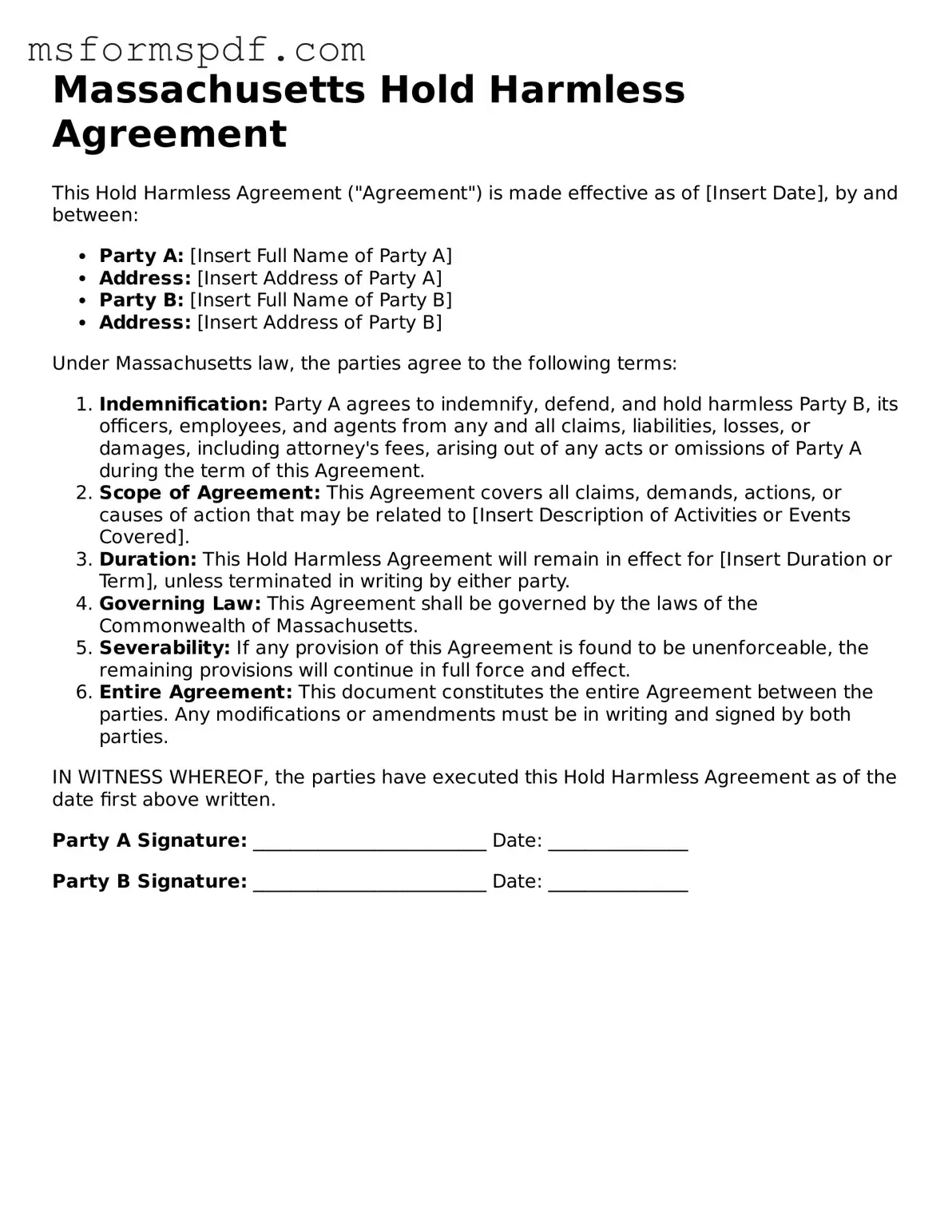Blank Massachusetts Hold Harmless Agreement Document
The Massachusetts Hold Harmless Agreement is a legal document designed to protect one party from liability for certain actions or events. This form is commonly used in various situations, such as contracts or agreements, where one party agrees not to hold the other responsible for potential damages or injuries. Understanding its purpose and implications is crucial for anyone engaging in contracts within the state.
Launch Editor Now
